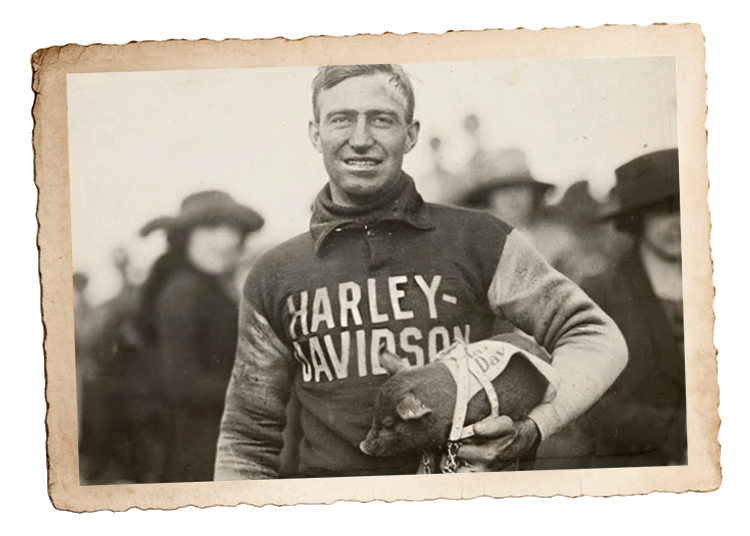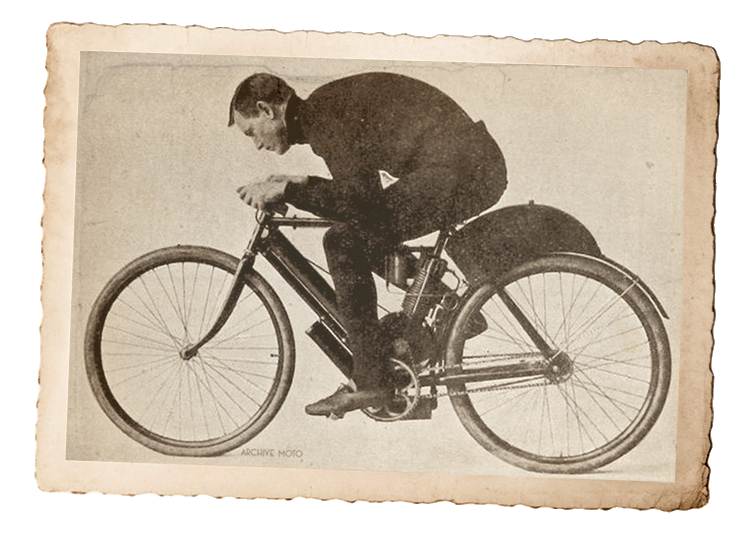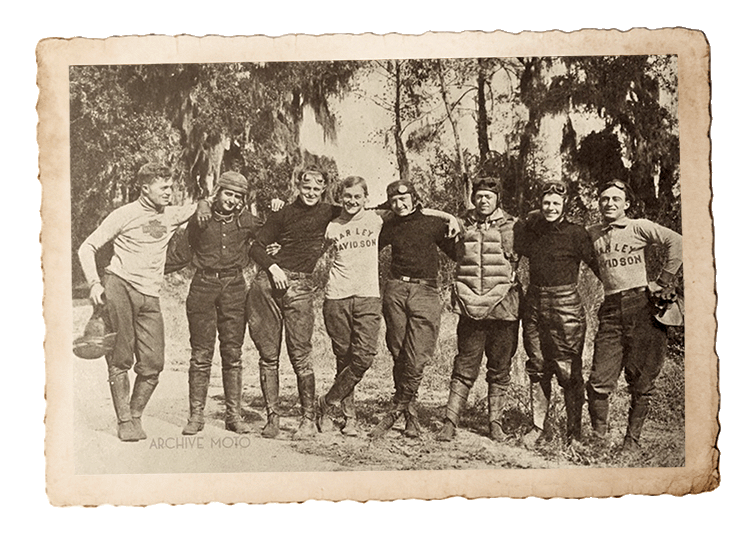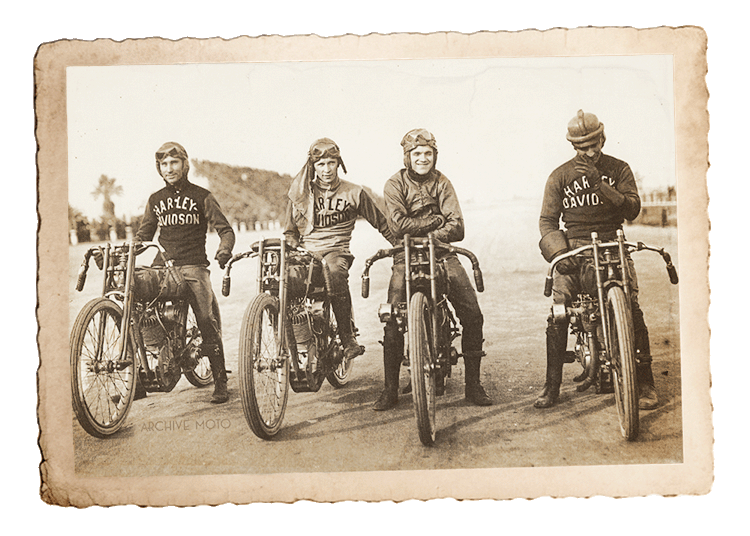
Ray Weishaar, pictured with Johnny the piglet. Photo via Ride Apart.
Back in the early 1900s, the Harley-Davidson “Wrecking Crew” race team chose a small pig as their official mascot. Legend has it that this is how the term “Hog” originated when referring to a Harley Davidson Motorcycle.
After a win, one of the riders would do victory laps around the track with the pig sitting on the bike’s gas tank. Ray Weishaar (pictured above), one of the Wrecking Crew’s racers, was especially fond of this tradition, hence why there are so many photos of him and the pig.
The Beginning of Motorcycle Racing

Oscar Hedstrom, photographed in his signature competition/exhibition attire - black trousers and a turtleneck - onboard one of his earliest machines in late 1902/early 1903. Photo via Archive Moto.
Motorcycle racing began in North America in 1903 with the formation of The Federation of American Motorcyclists, about 18 years after the first motorcycle was made and the same year that the first Motorcycle Club was formed. With the creation of the motorcycle, a rich and diverse culture was established in the roots of the American experience. Motorcycle racing continued to grow in popularity, and by the early to mid-teens, teams like Indian and Excelsior were known for leading the pack, with smaller companies like Thor, Flying-Merkel, and Reading-Standard filling out the roster. Despite th
The 2nd Annual Savannah 300

Pictured left to right, are Captain Alva Stratton, Jonathan Yerkes, Zeddie Kelly, Irving Janke, Martin Schroeder, Gray Sloop, Edwin French, and Ray Weishaar. Photo via Archive Moto.
Finally, in 1914, Harley-Davidson had entered their first race – the second annual American Classic Championship, a 300-mile road race, held in Savannah, Georgia on the former Grand Prize circuit. However, Harley was barely prepared for this race. They sent a train car full of experimental “stripped stock” motorcycles, known as the 11k racers, which had only been tested a handful of times prior to the race. The race team was a hodgepodge of Veterans, rising national stars, local heroes, privateers, and dealers. The first team was incomparable to the post-WWI “Wrecking Crew”, but nonetheless were a skilled group of 8.
Alva Stratton took over as team captain (after the original captain, Bill Brier, took a spill during practice that left him walking with a cane) and placed 7th overall, but impressed the crowd with his record-shattering final lap; he shot around the track, hitting speeds around 90mph on the straights (with an average speed of 72mph) even after running his bike for nearly 300 miles.
By 1917, Harley-Davidson had become one of the top 3 competitive manufacturers. Despite finally reaching a place of notoriety in the racing world, war efforts in America stalled the success of Harley’s team and other race teams, as supplies were being heavily rationed and production was being shifted towards war machines, and all professional racing was suspended for 1917 and 1918.
Harley-Davidson Race Team Reboot – The Wrecking Crew

From left to right, is Freddie Ludlow, Ralph Hepburn, Albert “Shrimp” Burns, and Otto Walker. Photo via Archive Moto.
Post-WWI, The Harley-Davidson Race Team made a comeback into the racing scene. Up-and-coming racers Fred Ludlow and Ralph Hepburn (who had just served in the United States Army during the war) were obvious initial choices for the team. Albert “Shrimp” Burns worked on honing his racing skills on the track throughout the war and was also invited back onto the team due to his dedication to improvement over the years. Otto Walker, one of Harley’s earliest pre-war racers, was also invited back to the team. Walker assumed responsibility of team captain in late 1919 after the season had already begun, due to his positioning near the front lines during the war. The rest of the team was carefully selected to form Harley-Davidson’s new, impressive team, eventually known as The Wrecking Crew.
Follow us on Facebook and Instagram for more Third Thursday Trivia questions, and find all the answers on our #ThirdThursdayTrivia series on our blog.

